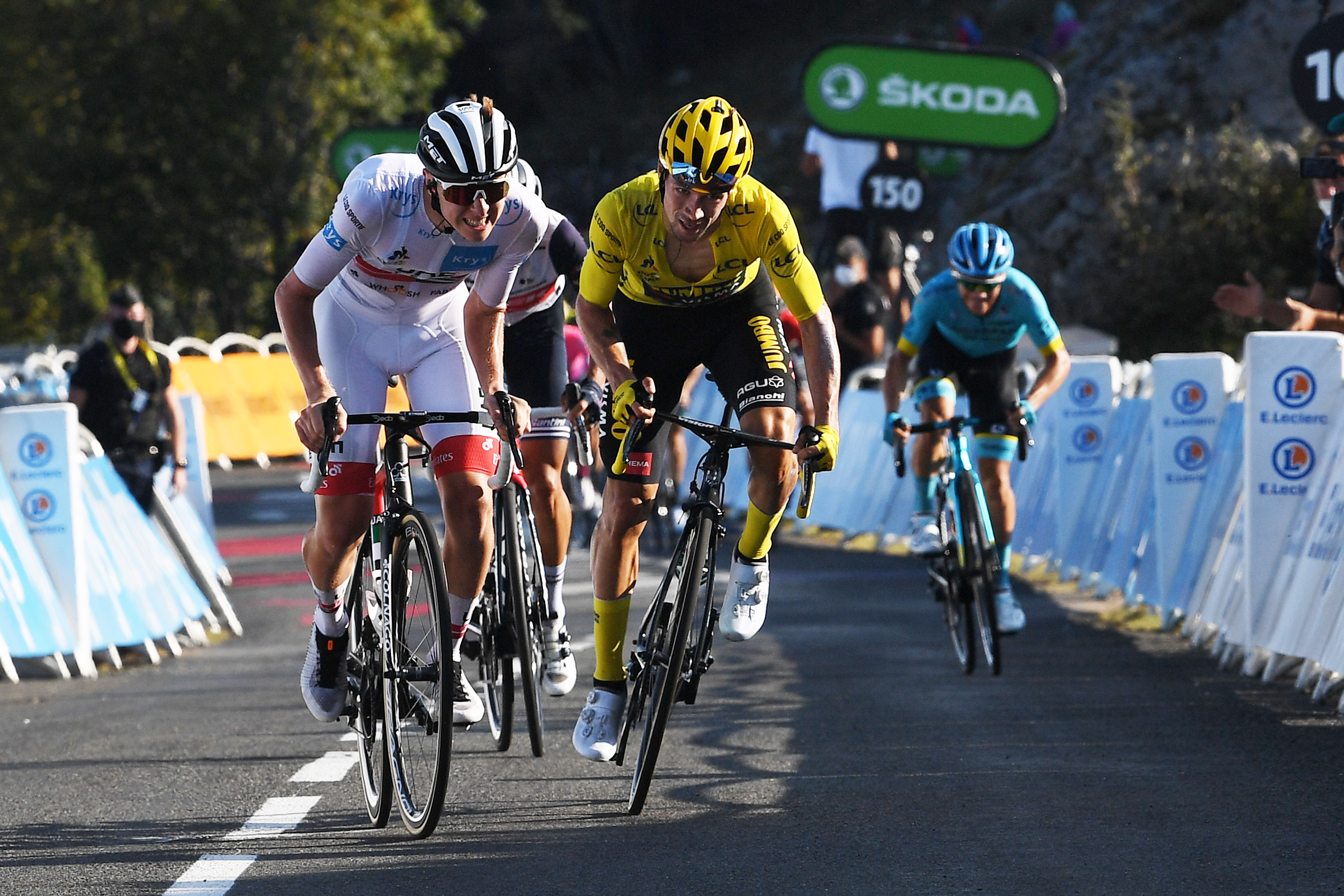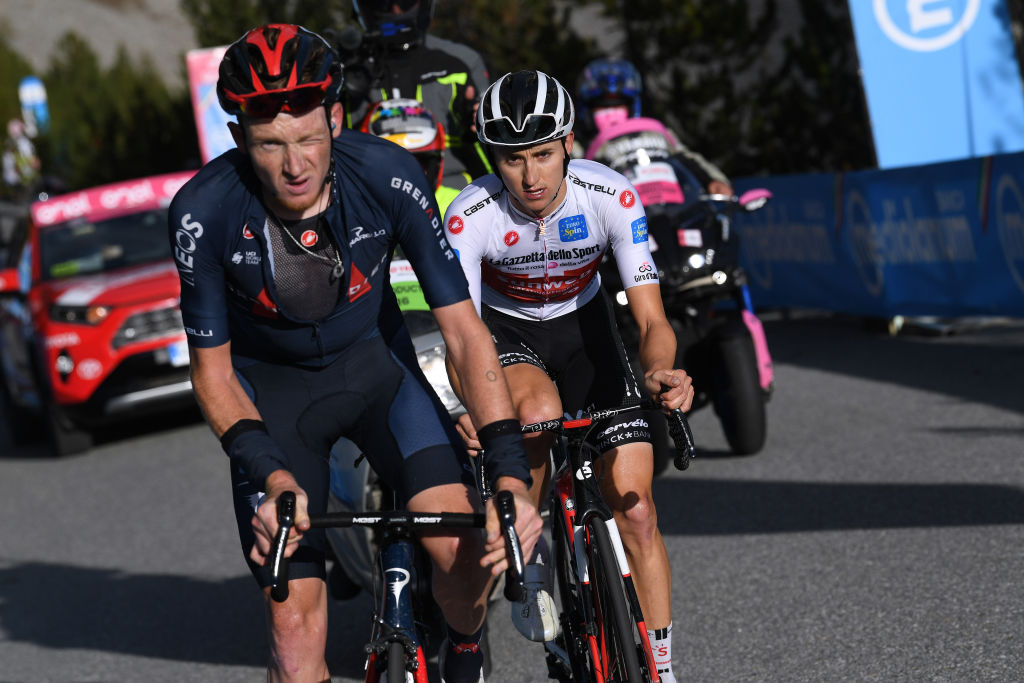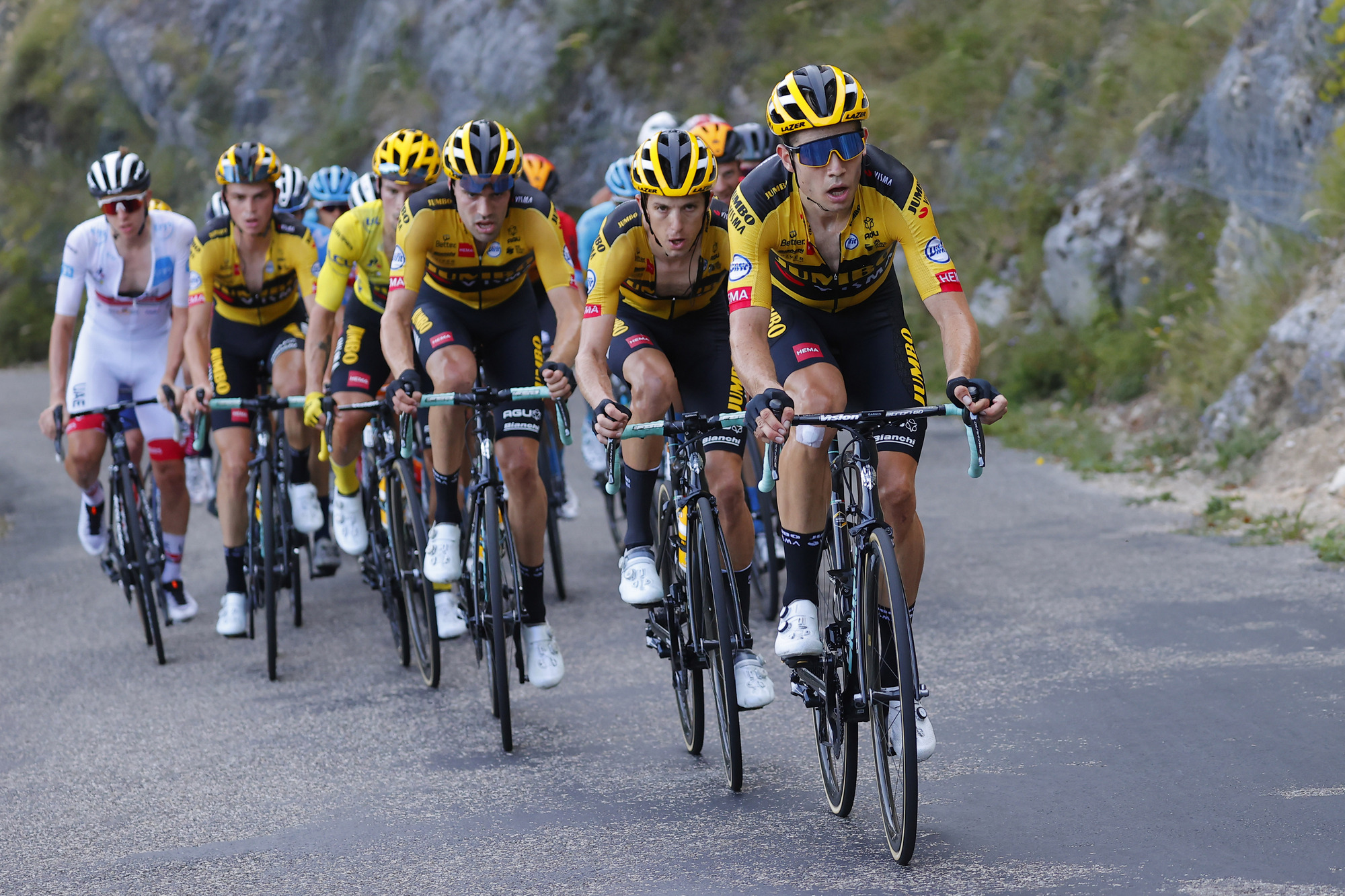Close encounters: Are grand tours getting closer?
Procycling magazine analyses whether grand tour results are getting closer

For the first time ever, all three of the Tour de France, Giro d'Italia and Vuelta a España were decided by less than a minute in 2020. Are the grand tours getting closer? Procycling magazine looks at the history of three-week races that are decided by seconds.
This article was taken from Procycling magazine issue 277, January 2021.
Subscribe to Procycling magazine here.
The winner of the first Tour de France in 1903, Maurice Garin, would have had time to stop during the final stage, sit down for a meal of steak and cognac, put his feet up for a muddy post-prandial coffee, get back on his bike, ride to the finish and still win by a long way. His final margin of victory was two hours, 59 minutes.
These days, the winner of a grand tour is more likely to be seconds ahead of his rivals, let alone minutes or hours. The last time a gap of more than an hour separated first from second in a grand tour was in the the 1927 Tour de France; the last 10-minute beating was in the 1984 Tour. And in the last decade, only two grand tours have been won by more than five minutes come the final day: Vincenzo Nibali’s 2014 Tour and Alberto Contador’s 2011 Giro. (And Contador was later stripped of that win for a previous doping offence.)
From the perspective of early 2021, it feels more than ever that grand tours are getting closer and closer. Exhibits A, B and C: the three grand tours of last year.
For the first time ever in a single season, the Tour, Giro and Vuelta were all won with margins that were less than a minute. Not only that, all three went down to the wire - the lead switched hands on the penultimate day in the Tour and on the final day in the Giro, and the race lead in the Vuelta wasn’t far from being overturned on the second-last day. As if to underline the point, the general classification with only the final-day time trial of the Giro left saw Jai Hindley and Tao Geoghegan Hart on the same time, separated only by the fractions of seconds they’d accrued in the previous time trial stages. That was unprecedented - after 20 days of racing, over thousands of kilometres, the leading pair were effectively tied.
Get The Leadout Newsletter
The latest race content, interviews, features, reviews and expert buying guides, direct to your inbox!
It certainly feels like grand tours are getting closer. The Giro has not been able to separate first and second by more than 65 seconds in the last five years. The biggest gap in the Vuelta since 2007 has been 2:33 - a decent lead, but one off-day from disaster. And even the Tour has got in on the act in the last few years - Froome trounced everybody in 2016, with a 4:05 lead in Paris, but since then, the margin of victory has been less than two minutes, and less than one minute in two of those editions.
It might be easy to conclude from this that grand tours are getting closer, but as always in cycling, it’s more complicated than that. It would only take one big win in one race in the next few years to demonstrate that bike races happen out in the real world, not in the post-event stats and analysis of previous events.
There’s also, obviously, a small sample size with grand tours - with only three a year, one anomaly has the potential to disrupt previous assumptions about the trend. Even the definition of a grand tour is a very recent thing in cycling - the Vuelta only really established itself as anywhere near the level of the Giro, let alone the Tour, in the late 1980s and early 1990s, and even then, many of the early editions in the 2000s were a mostly Spanish, parochial affair. And lastly, close grand tours are not a modern invention. If we include the early editions of the Vuelta, there have been 285 races in total, out of which 55 have been decided by margins of less than a minute. That’s almost one in every five - not a huge proportion, but not insignificant.

The 1921 Giro was won by Giovanni Brunero, and he was just 41 seconds ahead of Gaetano Belloni. In the 1970s, a decade dominated by Eddy Merckx, a rider famous for handing out grand tour thrashings, there were still eight decided by less than a minute. Merckx himself wasn’t above winning by narrow margins - he won the 1974 Giro by 12 seconds. That was a good year for fans of close races, because the Vuelta was even closer - 11 seconds separated winner José Manuel Fuente and runner up Joaquim Agostinho. (Karmic balance was restored in the Tour that year, however - Merckx beat Raymond Poulidor by 8:04). The closest ever race happened 37 years ago in 1984, when Frenchman Éric Caritoux won the Vuelta by just six seconds. The most famous close grand tour of all was the 1989 Tour, won by Greg LeMond, eight seconds ahead of Laurent Fignon. That year, Pedro Delgado won the Vuelta by 35 seconds, and Fignon the Giro by 1:15 - in fact if you add up the three margins of victory, it comes to an even smaller total than 2020. The only real anomaly, in fact, is the 1990s, where large winning margins were noticeably more common than in other decades - only two grand tours in the whole decade came down to less than a minute.
So we can look at the three grand tours of 2020 and acknowledge that they were close-run affairs, but this is not to say that there haven’t been many close races over the course of cycling history.
There’s also an interesting digression into sporting ethics. The 1990s and early 2000s, especially in the Tour de France, saw many massive winning margins, mainly by Miguel Indurain and Lance Armstrong. Indurain has obliquely referenced the realities of cycling in the 1990s, when EPO usage was rife, and everybody knows what Armstrong was up to. However, it’s true that not just race winners were doping in this era, and the question of whether EPO and blood doping magnified winning margins is a hard one to resolve. Armstrong says not, though he would say that, wouldn’t he? (For our statistics, we’ve used original results, to reflect the reality of the race as it happened, not the post-event changes and disqualifications, and we don’t condone the methods.)
Overall, however, the stats tell us that we are currently in an era of closer grand tours. If there is one difference with past eras, it’s that almost all of them have been close, when the close races of the past were distributed randomly. The question is: why?
The first reason is that riders have been getting better in general. The top echelon of riders is currently quite closely matched, because training has become more exact and scientific. Even as recently as 2015, Froome could go on a long solo attack on a summit finish to lay the foundations for overall victory, but the Tour especially has not seen an exploit like that since. The top riders are leaving things sometimes right to the sprint for the finish line to squeeze seconds out of their rivals, and even on the most significant mountain road stage of the 2020 Tour, to the Col de la Loze, the favourites waited to the final few kilometres to sort out their differences, and the top five were only separated by just over a minute. This has gone in tandem with the increasing strength of mountain domestiques, who can control grand tour stages deep into the final climb, sometimes even all the way to the finish. And the current trend in grand tour racing is for strong teams to ride in a controlled and conservative fashion. Team Sky did this for many years, Jumbo-Visma copied them last year, and though it didn’t result in overall success for the Dutch team, the truth is that if they didn’t do it, another team would - for example Bahrain-McLaren, who attempted to strangle the Loze stage themselves. Critics have pointed out that these tactics aren’t as exciting as the long-range attacks of cycling history. But then again, they have also resulted in closer races in the last few years.
Race organisers also like their races to be closer, because the more people are still interested in the ongoing battle, the more they can charge to sell their race to advertisers and television companies. To this end, they’ve ditched long time trials, and designed in many cases backloaded courses which leave the big battles to the final week, or even weekend.

The flip side of this is that while we were treated to incredible finales in all three grand tours this year, it doesn’t guarantee that the two weeks before are entertaining. The Vuelta saw an exciting three-week long battle between Primož Rogličc and Richard Carapaz. However, the Giro favourites seemed happy to let João Almeida sit in the pink jersey for two weeks, with little movement at the top of the GC. The head of the Tour was similarly undynamic (until that extraordinary stage 20 TT from Tadej Pogacar) through most of the race. Jumbo-Visma crushed the life out of the GC battle with strength in numbers in the mountain stages (which they now have ample time to regret) and the excitement was largely a by-product of the hard-fought and unpredictable race for the green jersey.
There’s one more trend in grand tour GCs which may be related to the closeness of the final GC between first and second, and the general tendency of the favourites to stick together in a group - there’s been a large fall-off behind the first dozen or so riders. It used to be the case that the Tour would see at least 22 riders finish within an hour of the winner, spread reasonably regularly, and as recently as 2011 that number was 30. In 2020, there were only 16 riders within an hour of Pogacar, even though the top nine were only separated by nine minutes.
Riders are either finishing right at the front of the race, or they are finishing a long way down, perhaps because teams have worked out that once a rider’s job is done, the best thing to do is not get to the finish as fast as possible, but to get to the finish as slowly as possible, the better to save energy.
It’s now been five years since a really one-sided grand tour, and cycling fans will be keen to see another trio of close races in 2021. Given the fact that no single rider is head and shoulders above any of the others, that trend should continue, and that can only be a good thing for the sport.
Edward Pickering is Procycling magazine's editor. Take advantage of Procycling magazine's subscription offers and never miss an issue.
Procycling magazine: the best writing and photography from inside the world’s toughest sport. Pick up your copy now in all good newsagents and supermarkets, or get a Procycling subscription.
Edward Pickering is Procycling magazine's editor. He graduated in French and Art History from Leeds University and spent three years teaching English in Japan before returning to do a postgraduate diploma in magazine journalism at Harlow College, Essex. He did a two-week internship at Cycling Weekly in late 2001 and didn't leave until 11 years later, by which time he was Cycle Sport magazine's deputy editor. After two years as a freelance writer, he joined Procycling as editor in 2015. He is the author of The Race Against Time, The Yellow Jersey Club and Ronde, and he spends his spare time running, playing the piano and playing taiko drums.